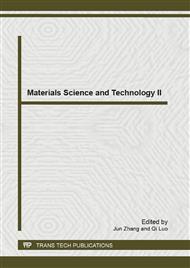p.66
p.70
p.74
p.78
p.84
p.89
p.94
p.98
p.103
Effect of Substrate Orientation and PH3 Thermal Annealing Treatment on Catalyst-Free InP Nanowires
Abstract:
Catalyst-free InP nanowires were grown on Si (100) and Si (111) substrates by metal organic chemical vapor deposition and the morphology, crystal structure, and optical properties of the nanowires are investigated. X-ray diffraction results show two peaks of InP (111) and InP (220) in the spectra. Two more peaks of InP (200) and InP (311) are observed if PH3 thermal annealing is performed on the sample for 15 minutes after nanowire growth is completed. The InP (220), InP (311), and InP (200) peaks originate from InP crystal formation on top of the nanowires; only the InP (111) peak originates from the InP nanowires. Finally, the temperature dependence of the PL peak positions of InP nanowires grown on Si (100) and InP substrate are measured.
Info:
Periodical:
Pages:
84-88
Citation:
Online since:
July 2013
Authors:
Keywords:
Price:
Сopyright:
© 2013 Trans Tech Publications Ltd. All Rights Reserved
Share:
Citation:


